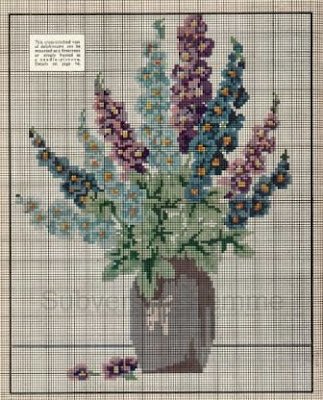'1934 was arguably one of the worst years of the Great Depression as the world's economy hit rock bottom. As the situation seemed hopeless, more and more people turned to whoever promised them a better life. At this time in history, the rising leaders used peoples' fears and prejudices to rally support and create a scapegoat for the world's problems.'
This was, of course, most notable in Germany, where Hitler was rising in power. Many nations fell under the control of political extremism - Nazism, extreme Communism, Fascism.
In 1934, Hitler declared himself 'Fuhrer' and absolute leader of the country. He began his radical propaganda to spread the idea of the racial inferiority of the Jewish people and the laws that would lead to increasingly repressive conditions for Jewish and other 'undesirable' peoples.
A ten year non-aggression pact was signed with Poland.
A ten year non-aggression pact was signed with Poland.
In the Soviet Union, Josef Stalin began the 'Great Purge', to rid his nation of dissenters, many of them Communist party officials, and others who disagreed with his rule.
.jpg) |
| This 1934 Soviet poster has Stalin proudly proclaiming "Life's Getting Better." |
In China, the Chinese Communists embarked on the Long March as they fled from their Nationalist enemy. During the march, Mao Tse-Tung emerged as the undisputed leader of the Chinese Communist Party.
In South and Central America, a number of dictators came to power, mainly due to the unstable economic conditions.
Japan broke two significant naval treaties and announced she would take no further part in disarmament measures. This allowed Japan to build up her navy and begin an aggressive military campaign prior to WWII.
The US experienced its first general strike.
Oklahoma experienced severe drought conditions in the summer of 1934. By 1934, some 35 million acres of farmland were totally destroyed, with another 225 million in extreme danger.
The infamous Bonnie Parker and Clyde Barrow were ambushed near Sailes, Louisiana in May 1934. Both were killed in the shoot out that occurred.
What things cost (US price comparisons):
- Average cost of a new house: $5,970 (this converts to approx $106,199 in today's dollars)
- Average yearly wages: $1,600 ($28,462 in today's dollars)
- Studebaker truck $625 (equivalent to $11,118 today)
- Loaf of bread: 8 cents ($1.42)
- Pound of hamburger meat: 12 cents ($2.13)
.jpg) |
| From Saturday Evening Post, June 29 1934 |
I have two issues of Stitchcraft from 1934 - Issue 17 from February and Issue 19 from April.
First let's take a look at the February 1934 issue of Stitchcraft.
'A ridgy pattern, raglan sleeves and big buttons right up to the neck are the points that bring chic to this simple coat. The original is bright red - very attractive with a beret to match and a grey skirt.'
'Very easy to knit, this practical little dressing gown! The original is sky blue with a white Angora collar. A deep crimson shade would be attractive too.'
We will take a look at popular culture and some more from the magazines next week, and I will reveal what I will be making from the February 1934 issue. Any suggestions?!
Finally, some progress on the Shoulders jumper from November 1933.
First let's take a look at the February 1934 issue of Stitchcraft.
 |
| The jumper from the front cover |
 |
| Loving how stylish even the sports clothes look - no tracksuit pants here, ladies! |
 |
| Fancy some knitted undergarments? |
 |
| Love this issue's embroidery transfer |
'A ridgy pattern, raglan sleeves and big buttons right up to the neck are the points that bring chic to this simple coat. The original is bright red - very attractive with a beret to match and a grey skirt.'
'Very easy to knit, this practical little dressing gown! The original is sky blue with a white Angora collar. A deep crimson shade would be attractive too.'
We will take a look at popular culture and some more from the magazines next week, and I will reveal what I will be making from the February 1934 issue. Any suggestions?!
Finally, some progress on the Shoulders jumper from November 1933.
Well, not much actually! The ribbing as per the pattern is 3 inches - this is 2 inches and I feel it is long enough. Vintage patterns seem to have much longer/deeper ribbing than modern patterns. Often the ribbing is 1/3 of the total length of the garment.
So now I am ready to start the pattern! Exciting!
So now I am ready to start the pattern! Exciting!

.jpg)
.jpg)
.jpg)




.jpg)
.jpg)
.jpg)
.jpg)













It really was a grim time all over the world. Can't wait to see some progress on the shoulders jumper. I am intrigued.
ReplyDeleteUp to the second pattern repeat now!
DeleteIt is always amazing to me, studying history, that man just doesn't seem to learn from the mistakes of the past. I always find history fascinating.
I love seeing all those vintage patterns. I have a couple of fairly old knitting magazines that were given to me years ago. They have some great patterns in them.
ReplyDeleteI love them too! The patterns are just so stylish, and I love looking at the hairstyles as well.
DeleteI always enjoy you vintage posts. It's fascinating to see so many events from one year all juxtaposed together :)
ReplyDeleteThank you! I am really enjoying doing them. There are so many interesting facts that pop up. And I love researching the books and movies.
Delete